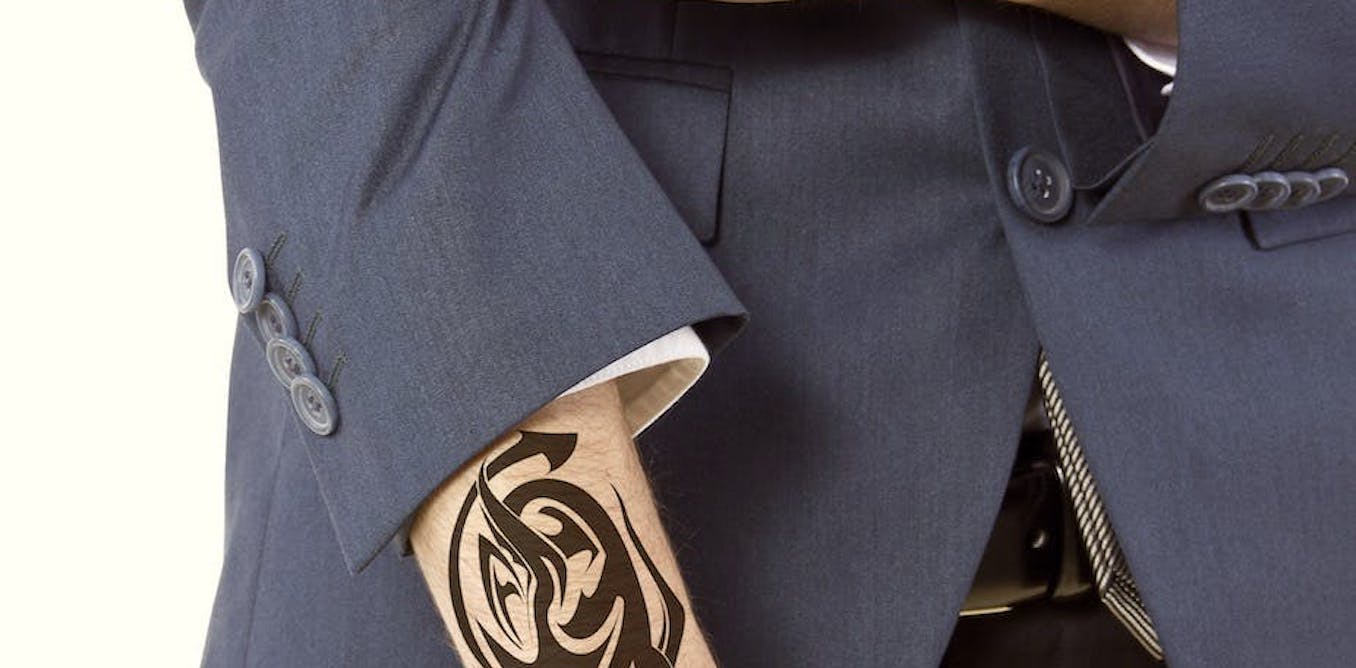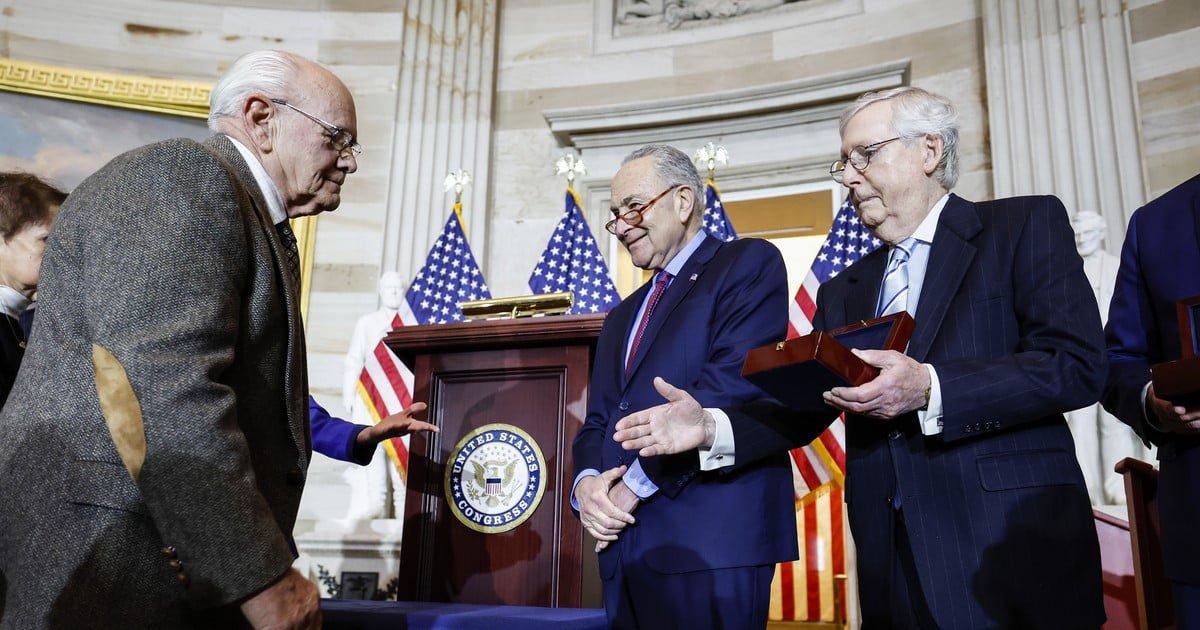For all the talk of the pandemic having relaxed our workplace dress code, the truth is that you would be best not turn up in loungewear in certain sectors, even in 2022. Research we conducted in the French banking industry confirmed the workplace still favours job candidates with a conservative look.
Through interviews with 32 recruiters (28 men and 4 women between the ages of 28 and 57), we were able to pinpoint the items best not to don if one wants to work as a bank advisor, including visible tattoos, piercings, miniskirts, scruffy clothes or combining jeans with sneakers.
Any of these is likely to inspire comments that could torpedo an application (“No such thing here” or “That’s a deal-breaker”).
Our study produced a clothing reference system that works much in the way of grammar rules: what is acceptable – the conforming – and what is not acceptable – the non-conforming. Jeans can be considered, but only if they are without holes or faded hues, and matched with a jacket and/or a shirt.
Recruitment, an uncertain situation
For all the rational tools and methods at our disposal in the 21st century, recruiting a candidate remains an uncertain process. It is impossible to infallibly forecast the turn of events. In an unpredictable context, individuals make decisions by relying on conventions – i.e. common rules – that are accepted and followed within the same group.
In the case of recruitment, these include criteria that are both explicit and implicit. The former include institutional benchmarks such as diplomas, level of training, number of years of professional experience and salary. The latter are used mainly in the course of the interview, a method favoured by recruiters for selecting candidates in almost 90% of cases.
The implicit criteria tend to refer back to verbal information (words) and non-verbal information (gestures, voice, intonations or clothing). Thus, clothing is a parameter in recruitment and more broadly in a professional context. Clothing can be an element of attractiveness or rejection towards the company on the part of the candidate but also of selectivity for the recruiter.
Dress code en entreprise : tenue correcte (toujours) exigée
In essence, the selection process boils down to what scholars describe as the ASA model, Attraction-Selection-Attrition.
During the attraction phase (A), candidates choose the company on the basis of characteristics relating to their personality, tastes, goals and lifestyle. Dress codes can therefore shape this choice depending on whether or not they correspond to the candidate’s profile and expectations.
Recruiters in the selection phase (S) assess the candidate’s suitability by favouring people with certain attributes that are in line with the company’s culture and values.
The higher the degree of mismatch, the more likely the employee is to be dissatisfied with his or her job, to take time off and to quit. Hence the risk of attrition (A) listed as the last stage of the ASA cycle.
Money is a “serious matter”.
For bank recruiters, an outfit that conforms to the expected dress code therefore reflects a set of positive clues about the candidate and acts as a decision support. A branch manager justifies himself:
“Having a candidate who from the outset has more or less adopted [the company’s] codes and in particular, the dress code, is someone who is already equipped with [its] mindset, who has understood what will be expected.”
According to the interviewees, a conforming dress code shows an understanding of the banking culture and an adherence to its values, including trust above all. This is because trust is directly related to money and credit in the banking world. Such associations have left their mark on language. A person tasked with looking after another’s money is said to be carrying out fiduciary duties, implying faith (fides) and trust. One also “gives someone credit”.
Furthermore, dress code is a clear sign of the candidate’s professional credibility with clients, which recruiters pay particular attention to, as one human resources director points out:
“Money is a serious thing. When we talk about savings, projects, loans… I don’t want to be faced with someone who looks crazy.”
A “conservative” and “serious” outfit confers a commercial aura to the applicant, in line with banking products and services. It conveys an image that is appropriate to the profession and inspires confidence in the client in a competitive sector where the perceived risk remains high. This congruence of clothing would then signify proof of the candidate’s skills, or even of his expertise.
Dress for success: appearance-based discrimination?
Finally, our research illustrates how recruiters equate respect for dress codes with certain of the candidate’s personal traits. On the one hand, showing up with the right clothes on the job indicates one’s ability to communicate, which, in a digital sector, contributes to brand value creation. On the other hand, dress conformity reveals their motivation and their ability to adapt to the banking environment. In other words, one really does dress for success.
However, such judgements can also easily tip into appearance-based discrimination.
As a reminder, a 2018 TNS Sofres survey on the perception of equal opportunities showed that looks, beauty and weight continue to act as discriminatory criteria driving salary inequality. Despite a spate of laws punishing it, discrimination continues to plague the workplace, from the time of hiring onwards. It is estimated it will double between 2001 and 2021.




